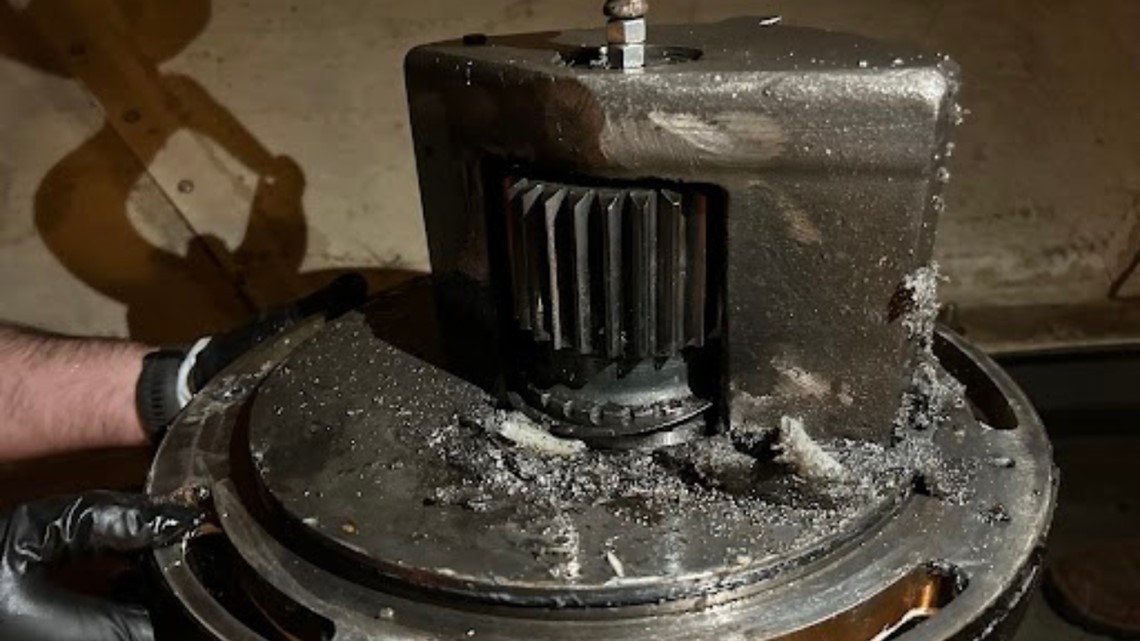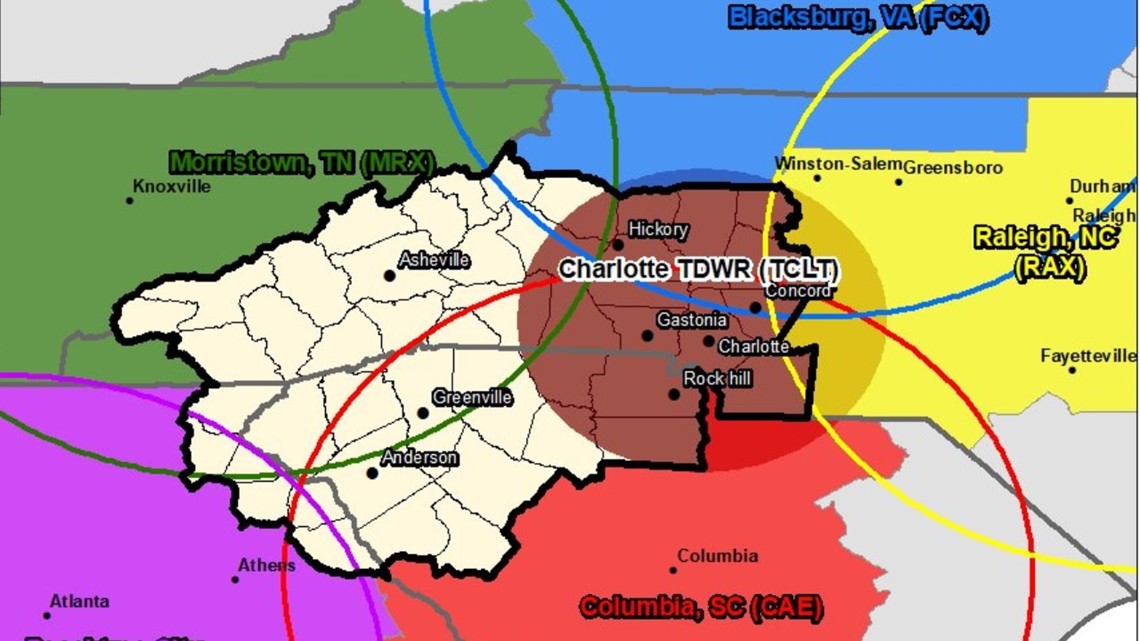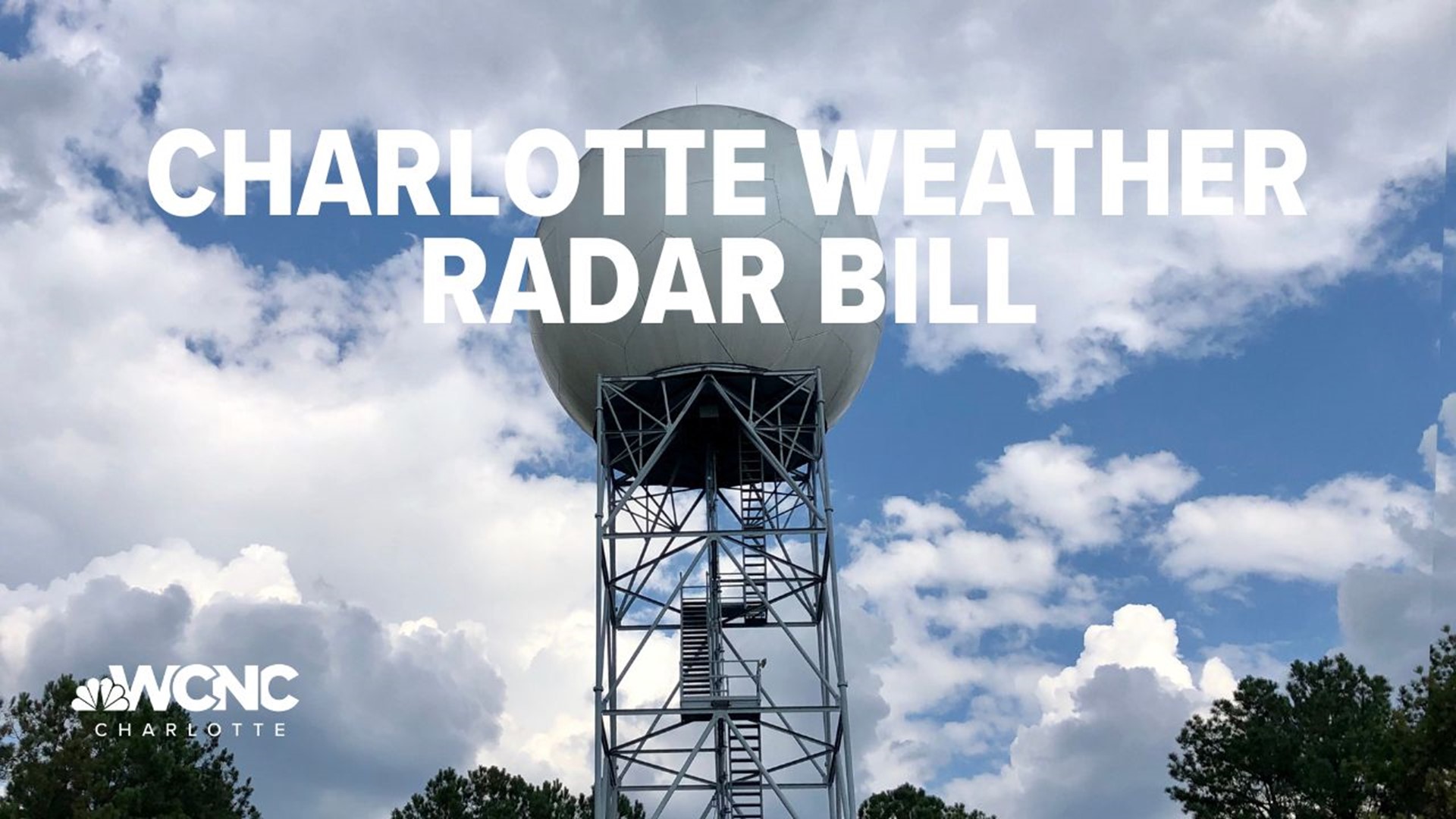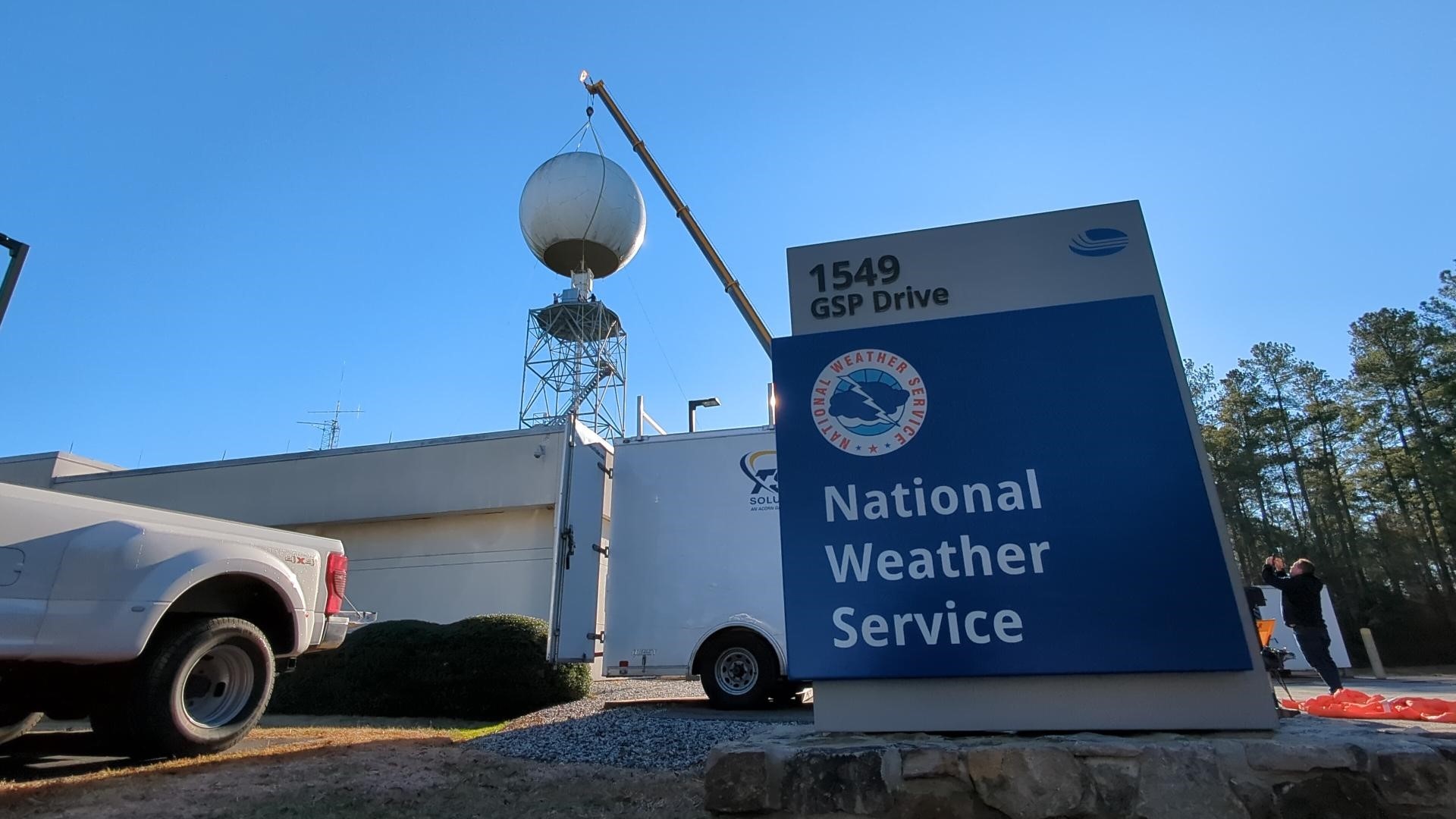GREER, S.C. — United States Congressman Jeff Jackson wants Charlotte to get its own weather radar.
The Democrat from North Carolina's 14th congressional district proposed House Bill 4912 this week. The bill calls for a radar to be built near Charlotte.
Charlotte has no NWS radar
Charlotte has no WSR-88D, the name of the full-power weather radars operated by the National Weather Service offices across the country. The radars were deployed in the 1990s and, as signified by the "88" in its name, use technology formalized in a 1988 design.
Charlotte's nearest WSR-88D, "KGSP," is in Greer, South Carolina. The radar is operated by the National Weather Service's Greenville-Spartanburg office and is about 80 miles from Uptown Charlotte.
Slightly further away from Charlotte, are "KCAE" in Columbia, SC; "KRAX" in Raleigh, NC; and "KFCX" in Blacksburg, VA, which is operated by the National Weather Service office in Roanoke. "KMRX" operates out of Morristown, Tennessee but is limited due to the mountainous terrain.
After dangerous winds killed 37 people and injured 20 others in a Charlotte plane crash in 1994, Charlotte Douglas International Airport was awarded a "terminal doppler radar." "TCLT," as it's known, is in northwest Charlotte and monitors the weather surrounding the airport. The radar is operated by the Federal Aviation Administration and not the National Weather Service.
While helpful for localized weather, a terminal radar is smaller and produces less imagery than its WSR-88D counterpart.
Radar hole


Charlotte suffers from what WCNC Charlotte Chief Meteorologist Brad Panovich calls a "radar hole." While some radar coverage is still present, the signal is less ideal than preferred in places such as Charlotte, Monroe, Concord, Salisbury, Statesville, and Hickory.
The curvature of the earth causes a radar beam to get further and further away from the ground as it travels. For KGSP in upstate South Carolina, a beam height of one thousand feet over Spartanburg, South Carolina climbs to seven thousand feet by the time it arrives in Charlotte.
Certain weather events, like tornadoes, could literally slip under the radar, with the radar's beam too high to see that portion of the storm. That's what happened when four people were injured by an EF-2 tornado in Harrisburg, North Carolina in 2012.
Harrisburg, located in Cabarrus County, along with neighboring Concord, Salisbury, and Statesville are in the heart of the radar gap, which is created when you compare the four neighboring WSR-88D radar sites.
While the gap has prompted some to build their own private radar sites over the years. Panovich is calling for a public solution, as he told the Washington Post in 2020.
Keeping old tech alive
Until new radar solutions can be explored, the National Weather Service has to keep its aging generation of weather radars online. That's where Service Life Extension Program, also known as SLEP, comes in.
The nationwide program upgrades radars with the intent of keeping them operating through the year 2030 and beyond. The process, overseen by the National Weather Service's Radar Operations Center, upgrades key components including signal processors, the transmitter, and the pedestal, which holds the radar dish in place as it rotates 360 degrees.
Replacing the pedestal is one of the four phases within SLEP. It requires two weeks and a crane, which lifts the 15,000-pound pedestal into place.
Through the first part of 2023, technicians replaced all the pedestals on the WSR-88Ds serving both North Carolina and South Carolina.
Across the country, SLEP is scheduled to be completed on the nation's 159 operational radars by the end of 2023. The project is costing the National Weather Service, the United States Air Force, and the FAA $135 million.
GSP repairs


The radar in upstate South Carolina jumped the line when it unexpectedly went offline on Dec. 31. The bull gear had been damaged and could no longer spin the radar atop the pedestal. Without the ability to spin, the radar cannot get a 360-degree view of the sky.
A photo from the National Weather Service shows metal shavings from the destroyed bull gear. After 27 years, the bull gear needed replacing, a project that also involves removing the pedestal.
So rather than wait until March, the radar in Greer is getting an expedited repair.
While this work was originally scheduled for March as part of SLEP, technicians worked early to complete that work ahead of schedule.


Building a stronger radar network
Anytime one of the weather radars goes offline, the surrounding network of weather radars needs to pinch-hit. While dependency is part of the network layout, an offline radar only exaggerates existing data gaps.
NOAA is exploring options for new weather radars. In the years after 2030, technology such as phased array could be used to build a new generation of radars. However, details and a timeline have not yet been discussed.
Support from Jackson and other lawmakers could mean Charlotte is more closely considered a host-city when the network is overhauled in the decades to come.


